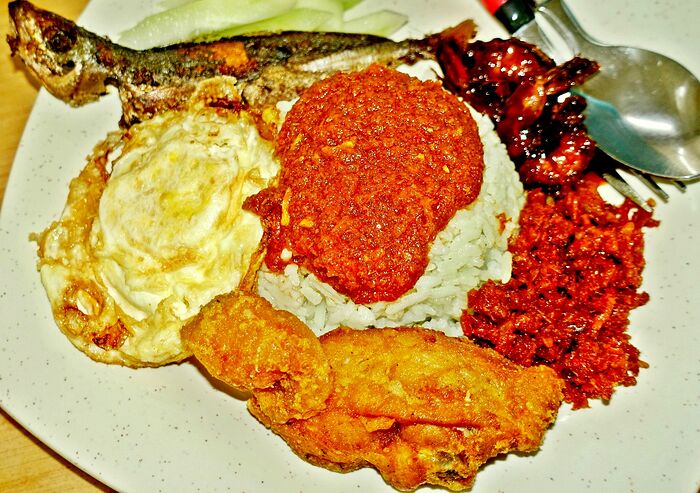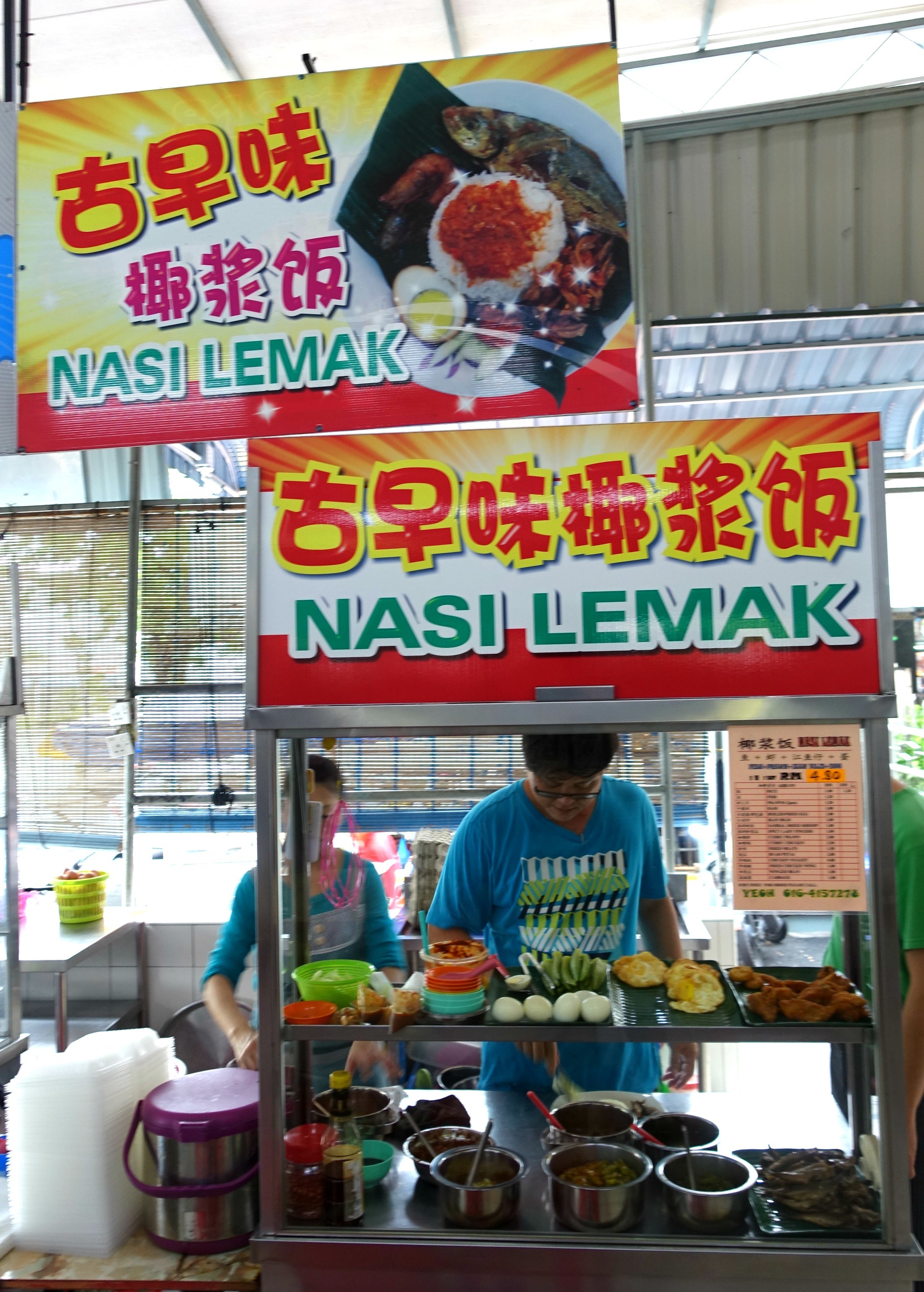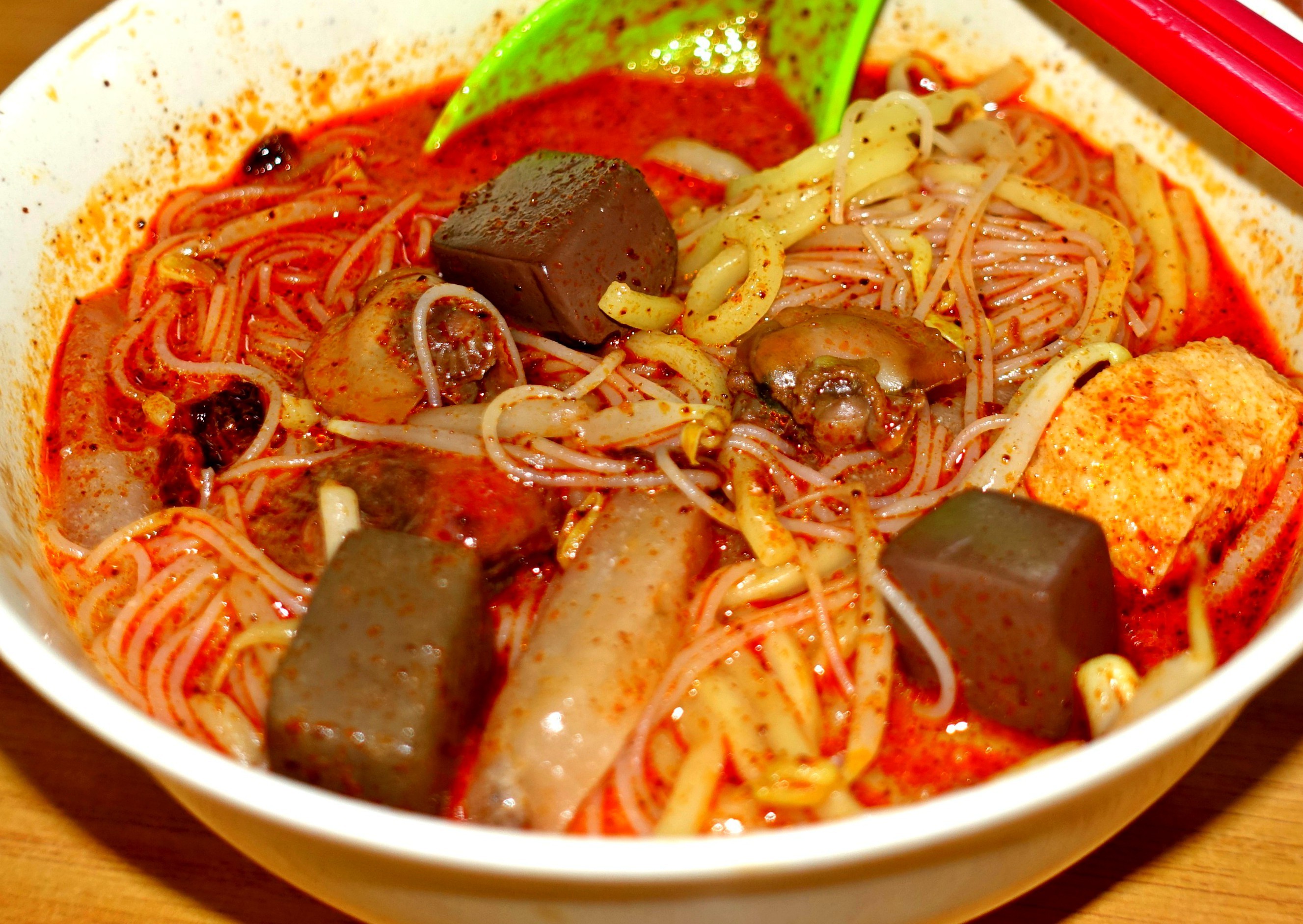Genting Cafe in Island Glades has been a permanent fixture of sorts for Penangites looking for good hawker food for nearly 4 decades. Through the years, many stalls have come & gone, but a few have built up a solid following among locals for their offerings which are rated as among the very best in Penang: the legendary chee cheong fun stall which pioneered the addition of peanut butter/peanut paste into the usual hoi-sin sauce/prawn paste mixture (now copied by almost every other street hawker in Penang), the pasembor (Chinese rojak) man with his unkempt pushcart parked upfront of Genting Cafe, but offering the best-tasting pasembor one can ever find on the island, plus a branch of the famous Kuantan Road curry mee stall.
What we had the other weekend:
- Hokkien mee - this is the Penang take on the Fujianese spring noodles, except that the Penang version incorporates chili paste to get the noodle borth’s trademark reddish hue, whereas the original Fujianese version was reddish because of prawn roe and the use of prawn shells in the preparation of the soup stock.
The version here, a mix of yellow Hokkien wheat noodles, thin rice noodles (“bee hoon”), beansprouts and water spinach (“kangkong”) were steeped in the broth, then garnished with boiled shrimps, pork slivers and soy-braised hardboiled egg, topped with crisp-fried shallots.
- Wantan mee - the Penang version is pretty similar to the ones in Kuala Lumpur or elsewhere in Malaysia, except that Penang versions often incorporated crisp-fried wantans, instead of par-boiled ones. Penang wantan noodles also have a chewier texture than KL versions - local taste preferences.
- Penang asam laksa, with deep-fried popiah (spring rolls) - a local favourite: thick rice noodles in an extraordinarily sour-spicy soup, garnished with shredded torch ginger flower (Malay: “bunga kantan”) and Chinese lettuce leaves. An assertive, strong-smelling “hae koh” (fermented shrimp sauce) was served on a spoon atop the bowel of noodles - one adds as much as one prefers into the broth, and discard the rest. Warning: “hae koh” smelt stronger than even Cambodian “prahok” or Malaysian “belacan” (fermented shrimp paste), so be quite sure to have a small taste or smell of it beforehand.
Serving crisp-fried spring rolls with asam laksa (some people liked to dunk the spring rolls into the laksa broth) was a fairly “recent” innovation. 20 years ago, it was virtually unheard of to consume the two items together.
- Nasi lemak - virtually Malaysia’s national dish: coconut milk-flavoured rice, served with a plethora of side-dishes. There are variations as to Malay nasi lemak, Chinese, Indian or Nyonya ones, which can determine what kind of side-dishes are served with it. The stall here serves the Penang-Nyonya version, so its side dishes included sambal (chili paste), asam prawns, fried chicken, fried egg, fried tamarind-marinated fish, and raw slices of cucumber.
-
Penang-style chee cheong fun - the Penang version of this steamed rice rolls dish are dressed in bean-sauce and topped with toasted sesame seeds, like elsewhere in Malaysia and Singapore. But this particular stall is famous for adding peanut paste into its dressing, giving it a peanut butter-like thickness and nutty richness.
-
Char koay teow - the one dish which every foodie visitor comes to Penang for: star-fried flat rice noodles, flavoured with a combination of soy sauce, fish sauce, oyster sauce and other “secret” condiments. Cockles, shrimps, Chinese waxed sausages, egg, beansprout and chives will be added during the frying process. Pork lard is usually used for frying, so the dish is inordinately greasy and rich-tasting.
- Penang white curry mee My personal favourite dish here: a mix of yellow Hokkien noodles and thin “bee hoon” rice noodles in a fairly liquid, spicy broth, enriched with coconut milk. Penang curry mee is different from the thicker curried versions in Kuala Lumpur, Ipoh, Malacca and Singapore.
Penang ones also have pig’s blood pudding, cut into cubes - I adore these. Blood cockles, tofu puffs and cuttlefish strips are also added. Perfection in a bowl. The stall here is related to the famous stall on the corner of Kuantan Road and Dato’ Keramat Road, often regarded as one of the best in Penang.
- Pasembor (Chinese rojak) - the Chinese “pasembor” tend to be lighter in taste, sweeter and not as spicy compared to Indian “pasembor” (called Indian “rojak” in Singapore, KL and elsewhere in Malaysia): crisp-fried tofu, rice crisps, jellyfish and finely-julienned jicama (Asian turnip) and cucumber, dressed in a thick spicy, sweet tomato-ey sauce thickened with mashed sweet potatoes.
The usual breakfast crowd at Genting Cafe - you really need to fight for a table: there is simply no queuing system - you stand near a table where you think the occupants are finishing their breakfast and glare at any other would-be trespassers.
Address
Genting Cafe
Lorong Delima 3, Island Glades
11700 Penang, Malaysia
Opening hours: 7am-4pm daily, except Wed (closed).





























































